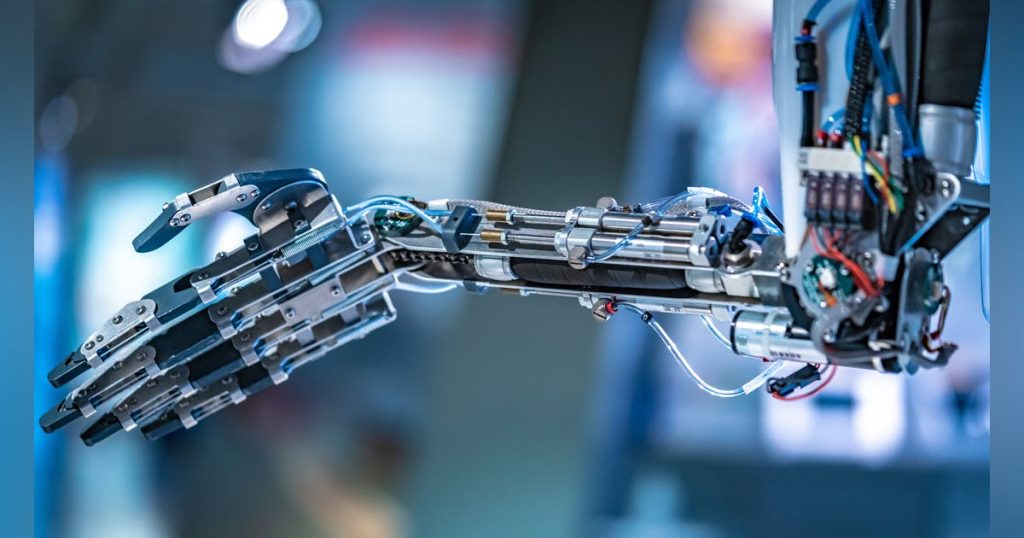We’ve all watched movies about robots integrating with humans, showing emotion and even taking over the world. While this may be surreal and inconceivable to most of us, it is not far from reality. Robots are with us and they are here to stay.
A robot is programmed to be able to physically do anything a human can, with more precision, accuracy and speed. They are programmed to carry out tasks faster and more efficiently than humans, with less risk of injury to the user and fewer errors. Almost all industries have embraced this growing trend. Advances in artificial intelligence, material sciences and in IT make robotics a preferred workforce. No wonder they (robots) are slowly taking over.
Robotics in the Home
Imagine a robot at home that can carry out those repetitive, menial tasks that you dread. This is already in effect in some countries, where a robotic arm cleans the house, washes dishes, cut vegetables, mows your lawn and even replaces your home security system.
Robots capable of reading emotion and responding appropriately are being manufactured. They are called humanoid robots and are eerily realistic; they are friendly and can carry on a conversation. Some are designed to engage with children and the elderly, in an effort to minimize loneliness.
Robotics in Security
Soldiers and other security officers are routinely placed in situations that can be deemed ‘high risk’, such as war and hostage situations. In the recent past, robots have replaced humans in the battlefield and have been used to carry out surveillance, to fight the enemy and even neutralize bombs.
A robot can detect anomalies and respond quicker and more accurately than the average human. All this, without placing an actual person at risk, is why robots are the preferred soldier in this digital age.
Robotics in Healthcare
Robots have been developed in the healthcare system to improve patient safety and accelerate diagnosis and treatment times. For example, robots are now used in surgery, where their precision is applied to make minimal incisions which, eventually, mean that the patient’s recovery and healing is faster than when performed by a surgeon’s hands.
Research and diagnostic processes can be long and tiresome. Robotic applications have automated these processes, resulting in faster turnaround times and fewer errors. Robotic prosthesis is a developing field where prosthetics are made to replace lost limbs and they exhibit more flexibility and controlled movement than the regular prosthetic.
Robotics in Manufacturing
The traditional manufacturing process is complex, repetitive and requires lots of manpower. As with all other industries, the use of robots has been adopted and embraced in manufacturing industry. A robotic arm is able to tirelessly sort, lift and even package hundreds of items in less than a minute. The use of a robot will minimize errors, eliminate the risk of injury in a factory and greatly reduce the cost of human resources.
Modern warehouses use robotics to take inventory, restock shelves and schedule processes. The use of these robots saves the manufacturer time and wastage that may result from human error.
Transportation
Human error is among the biggest causes of accidents. Blind spots, poor judgement, impatience and anger easily lead to traffic accidents on our roads. This is where robots come in.
A robot has multiple sensors and can be programmed to make decisions based purely on its surroundings. No emotions whatsoever (in other words, no road rage). This is why driverless cars, buses and trains have a near-zero rate of accidents and are now being made by General Motors, Tesla, Audi and other car manufacturers.
Robots can also be used to detect traffic snarl ups and make decisions on the best routes to use to get to your destination earlier.
Education
The education sector has relied on the physical presence and the actual touch of teachers to explain theories and processes to learners. However, in some instances, a teacher cannot explicitly demonstrate a process. A robot, on the other hand, can recreate the process and demonstrate an experiment from start to finish. A robotic arm can expedite a physics practical, without cutting out any step, safely and to conclusion. This is because it can be programmed to work faster and tirelessly, unlike a human.
A shy, introverted student may feel uncomfortable asking questions in a classroom. Interaction with a collaborative robot may feel less judgmental and the student feels at ease seeking clarification from the robot.
Agriculture
A farm is a tedious place to work in. Farm labour is expensive and processes involved in farming are long, tiring and require meticulous operations, often under the hot sun. Examples of these activities are weeding, pruning, seeding, applying fertilizer and harvesting.
An agricultural robotic arm can work faster than any human and so precisely that it will only pick ripe fruit. It will only weed out undesired plants and spray an exact amount of fertilizer per plant. This type of efficiency is what all farmers desire. Less work, more savings and increased output sounds great.
Assistive living
There are robots which assist the physically, emotionally and mentally challenged in our society; robots that assist the physically challenged move around, thereby giving them a sense of independence.
Other robots are programmed for use by special students in a classroom setting, e.g. children with autism. The repetitive action of these robots makes it easier for the students to learn skills, while allowing the teacher to focus on other matters.
Conclusion
The idea of robotics can be intimidating and surreal. That a machine can take over human operations and carry out these processes more efficiently is scary, especially in the wake of high unemployment rates. What about safety? Robotics has greatly evolved and ensuring safety of users is at the top of manufacturers’ concerns. A robotic arm is usually small, easy to handle and safe to use and is increasingly found in homes and factories across the world.
A robot is a man-made machine. It can only complement human hands, not replace them. The place of robotics in our daily lives keeps changing, but what is certain is that they cannot replace human touch and the emotion elicited by human interaction.

“Analyst. Web buff. Wannabe beer trailblazer. Certified music expert. Zombie lover. Explorer. Pop culture fanatic.”






More Stories
Google Pixel 9 Pro official case leaks and promotional videos
There is no solution to the problem of Intel 13th and 14th Gen processors crashing — no permanent damage
Internal change in iPhone 16 models expected to reduce overheating